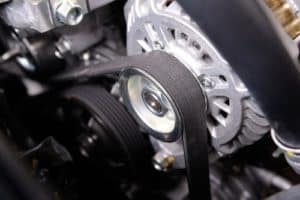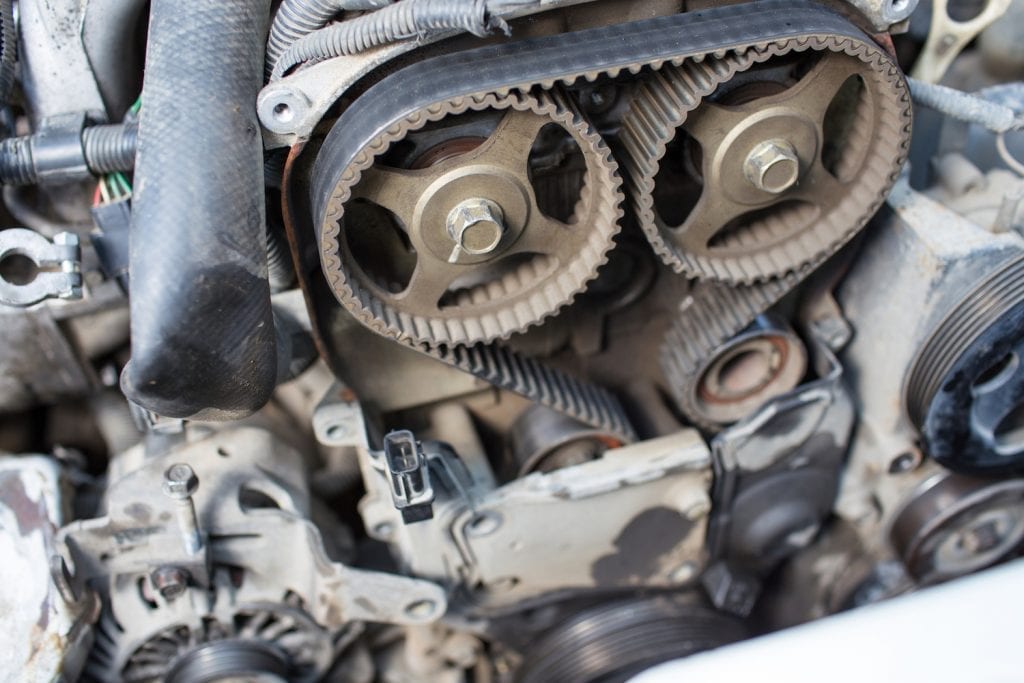Signs Your Timing Belt Needs Replacing
If your engine is making strange noises or your car is experiencing a loss of power, it may be time to replace the timing belt. Ignoring these signs can lead to serious engine damage and costly repairs.
In this comprehensive guide, we will explore the key indicators that your timing belt needs replacing and discuss the important role this component plays in your vehicle’s engine. By understanding these signs, you can avoid potential breakdowns and ensure the smooth operation of your car.
Additionally, we will provide insights on the importance of regular maintenance and the recommended replacement intervals for timing belts, helping you stay proactive in safeguarding your vehicle’s performance and longevity.
Common Signs Of Timing Belt Wear
Common Signs of Timing Belt Wear
Visible Cracks And Wear
Visual inspection is crucial for identifying timing belt wear. If you notice visible cracks or fraying on the belt, it’s a clear sign that it needs replacement.
Excessive Noise While Running
Unusual whirring or ticking noises coming from the engine can indicate timing belt wear. Excessive noise while running is a warning sign that should not be ignored.

Credit: www.worldfordpensacola.com
Impact Of A Faulty Timing Belt
When a timing belt becomes faulty, it can have a significant impact on the performance and safety of your vehicle. As one of the key components of the internal combustion engine, the timing belt is responsible for coordinating the rotation of the engine’s camshaft and crankshaft. This synchronization ensures that the engine’s valves open and close at the correct times, allowing for the smooth operation of the pistons and overall engine performance.
Engine Misfires
A faulty timing belt can result in engine misfires. When the timing belt skips a tooth or becomes worn out, the engine’s valve timing may become disrupted, leading to the improper opening and closing of the valves. This can cause the engine to misfire, resulting in a rough and inconsistent running engine, decreased fuel efficiency, and potential damage to the internal components of the engine.
Complete Engine Failure
If the timing belt snaps or breaks, it can lead to complete engine failure. Without the proper coordination between the camshaft and crankshaft, the engine’s pistons and valves can collide, causing irreparable damage to the engine. This can result in a catastrophic failure that renders the engine inoperable, requiring costly repairs or even engine replacement.
Importance Of Timely Replacement
Preventing Costly Repairs
A worn timing belt can lead to severe engine damage if not replaced promptly.
Ensuring Engine Performance
Timely replacement of the timing belt maintains the engine’s optimal performance.
- Prevent engine breakdowns.
- Ensure smooth operation.
| Signs Your Timing Belt Needs Replacing | Importance of Timely Replacement |
|---|---|
| Visible Cracks | Prevents costly repairs |
| Engine Misfire | Ensures engine performance |
| Squealing Noises | Prevents costly repairs |
| Visible Wear | Ensures engine performance |
Replace your timing belt on time to avoid expensive repairs and maintain engine efficiency.

Credit: gandgautorepair.com
Timing Belt Replacement Interval
A timing belt is a vital component of your vehicle’s engine that synchronizes the rotation of the crankshaft and the camshaft. Over time, this belt can deteriorate or become damaged, leading to potential engine failure. To prevent this costly and inconvenient scenario, it’s important to know when your timing belt needs replacing. In this article, we will discuss the recommended replacement interval for timing belts, manufacturer’s recommendations, and factors that can affect the lifespan of your timing belt.
Manufacturer’s Recommendations
Manufacturers typically specify a recommended timing belt replacement interval to ensure optimal performance and reliability of the engine. These recommendations can vary depending on the specific make and model of your vehicle. It is essential to consult your vehicle’s owner’s manual or contact the manufacturer directly to determine the recommended interval for timing belt replacement.
Factors Affecting Timing Belt Lifespan
Several factors can affect the lifespan of your timing belt, and it is crucial to be aware of these to avoid unexpected engine failure. Here are some of the key factors:
- Mileage: The mileage driven by your vehicle plays a significant role in the lifespan of a timing belt. As the belt ages, the rubber can degrade and lose its integrity, increasing the risk of failure. High-mileage vehicles are more prone to timing belt issues and may require replacement more frequently.
- Age: Even if you haven’t reached the recommended mileage interval, it’s essential to consider the age of your timing belt. Rubber components deteriorate over time due to exposure to heat and the elements. As a general guideline, it is often recommended to replace the timing belt every 5 to 7 years, regardless of mileage.
- Driving Conditions: Harsh driving conditions can impact the lifespan of your timing belt. Extreme temperatures, excessive humidity, and dusty environments can accelerate wear and tear, increasing the likelihood of failure. If you frequently drive in these conditions, it is advisable to monitor your timing belt’s condition more closely.
- Belt Tension: Proper tension is crucial for the longevity of the timing belt. If the belt is over-tensioned or under-tensioned, it may cause premature wear or failure. Regular inspections and adjustments of the belt tension can help prolong its lifespan.
- Other Component Wear: The condition of other engine components can also impact the lifespan of your timing belt. If the water pump, tensioner, or idler pulleys are worn or damaged, it can place additional stress on the belt, leading to premature failure. Therefore, it is recommended to replace these components simultaneously during a timing belt replacement.
Professional Inspection And Replacement
Is your car making strange noises while running? Notice engine vibration or difficulty starting? These signs may indicate the need for a professional inspection and timing belt replacement. Taking prompt action can prevent costly engine damage and ensure smooth performance on the road.
Professional Inspection and Replacement Choosing a Reliable Mechanic When it comes to the professional inspection and replacement of your timing belt, selecting a reliable mechanic is crucial. Entrusting your vehicle to an experienced and trustworthy professional ensures that the job is done correctly and efficiently. With various options available, it’s important to consider a few key factors when choosing a mechanic. First and foremost, look for certifications and qualifications. A mechanic who is certified by reputable organizations such as the Automotive Service Excellence (ASE) has demonstrated their expertise in the field. This ensures that they possess the necessary knowledge and skills to inspect and replace your timing belt accurately. Secondly, read online reviews and seek recommendations from trusted sources. Hearing positive feedback from previous customers provides insight into the mechanic’s reliability and customer service. Additionally, suggestions from family members, friends, or colleagues who have had their timing belts replaced can further guide you in making the right choice. Lastly, inquire about warranty and guarantees. A reliable mechanic will provide assurance for their work, offering warranties for the parts and labor involved in the timing belt replacement. This not only instills confidence in their skills but also protects you from any potential issues that may arise post-service. Timing Belt Replacement Process Once you have chosen a reliable mechanic, it’s essential to understand the timing belt replacement process. By being aware of the steps involved, you can have a clearer understanding of what to expect during the service. The timing belt replacement process typically includes the following steps: 1. Initial inspection: A professional mechanic will examine the existing timing belt for signs of wear, cracks, fraying, or looseness. This evaluation helps determine whether a replacement is necessary. 2. Removal of components: To access the timing belt, other components such as the engine cover, accessory belts, and pulleys may need to be removed. This step requires precision and care to avoid any damage to surrounding parts. 3. Timing belt installation: Once the old timing belt is removed, the new one is carefully installed, ensuring proper alignment and tension. This crucial step requires expertise to prevent any potential damage to the engine or other related components. 4. Component reinstallation: After the new timing belt is securely in place, the mechanic will reinstall the removed components, ensuring they are properly aligned and tightened. 5. Testing and final inspection: To verify the proper functioning of the new timing belt, the mechanic will conduct tests and a final inspection. This examination ensures all components operate smoothly and that the timing belt replacement was successful. By understanding this process, you can have peace of mind knowing what goes into replacing your timing belt and appreciate the craftsmanship required to complete the task effectively. Remember, when it comes to professional inspection and replacement of your timing belt, choosing a reliable mechanic is vital. With their expertise and the awareness of the timing belt replacement process, you can ensure your vehicle’s longevity and performance while avoiding any potential mishaps.
Credit: autolablibertyville.com
Frequently Asked Questions For Signs Your Timing Belt Needs Replacing
Are There Any Warning Signs Before A Timing Belt?
Warning signs before a timing belt failure may include engine misfires, unusual noises, engine vibrating, and oil leaks. It’s important to watch out for these signs and get your timing belt inspected regularly to avoid unexpected breakdowns.
What Are The Symptoms Of A Timing Belt Going Bad?
Symptoms of a bad timing belt include engine misfires, unusual noises, oil leaks, and a misaligned engine. Keep an eye out for engine vibration, difficulty starting, and a high-pitched squeal. If you experience any of these issues, it may indicate a failing timing belt.
How Do You Know If A Timing Belt Needs Changing?
You can tell a timing belt needs changing if it shows signs of cracking, fraying, or excessive wear. It’s recommended to replace it according to manufacturer’s guidelines to prevent engine damage.
What Does A Worn Timing Belt Sound Like?
A worn timing belt can produce a high-pitched squealing noise.
Conclusion
If you notice any warning signs mentioned, getting your timing belt replaced promptly is crucial. Ignoring these signs can lead to severe engine damage. Regular inspections and maintenance are key to ensuring the longevity of your vehicle. Stay proactive and address any issues promptly.
Your car will thank you.


